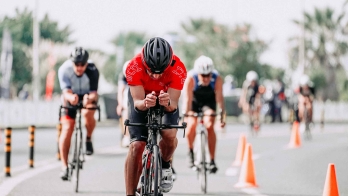Best cycling computers for any type of rider
Cycling computers offer numerous benefits for cyclists including GPS, maps, calories burned, elevation gained, power and various other metrics. However, with so many options on the market, finding the right bike computer for you can feel like searching for a needle in a haystack. From Garmin to Wahoo, we’ve researched and reviewed the best cycling computers for all types of riders to help you make a decision.

Just like all technology, cycling computers have come a long way since the simple cyclometers of yesteryear. Most of the models available now are wireless minicomputers that provide helpful tools like GPS, ANT+( a wireless technology that allows devices to talk to each other), WiFi, maps, calories burned, elevation gained or lost, along with the traditional measurements of speed, distance and time elapsed. Some of the best models also calculate your FTP
Best cycling computers can seamlessly connect with heart rate monitors and power meters, as well as third party apps such as Strava
With so many models and features to choose from, picking the right cycling computer for you can be overwhelming. That’s why we reached out to our community to determine which models our most active riders enjoy. We also included one newcomer that is starting to gain some interest in the cycling community.
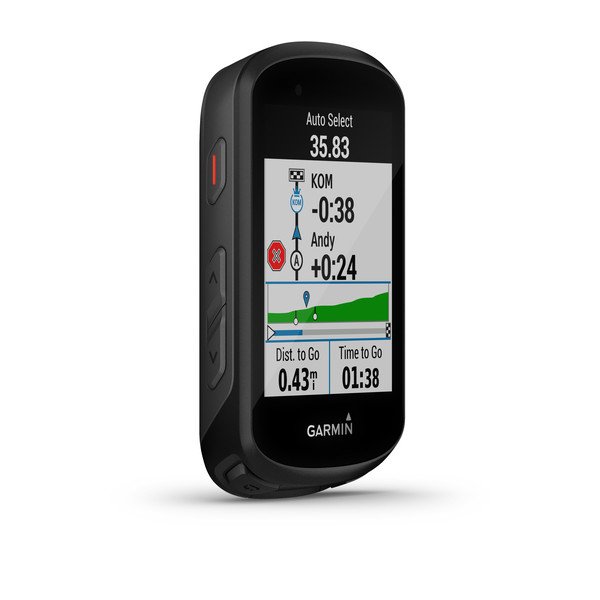
Garmin Edge 530
$299.99
Garmin has been the benchmark for GPS cycling computers since the 1990’s. The company updates its models on a regular basis and offers several models. The Garmin Edge 530 is one of the most popular cycling computers of all time due to its high performance, functionality and reasonable price tag.
Pros:
You can set up different ride profiles depending on where you’re riding (such as indoor, MTB, or road).
Features include: analyze advanced cycling metrics, and monitor heat and altitude acclimation.
You can program the unit to tell you when to hydrate while you’re on the bike.
Cons:
Navigation is not as in-depth and intuitive as with touch screen models. You have to use physical buttons when navigating the map (instead of being able to zoom in and out as you do with a smartphone).
You also can’t create a route on the unit itself, so if you want to meet a friend at the coffee shop mid-ride you need to know how to get there just by looking at the map on the screen.
Who it’s for:
Garmin Edge 530
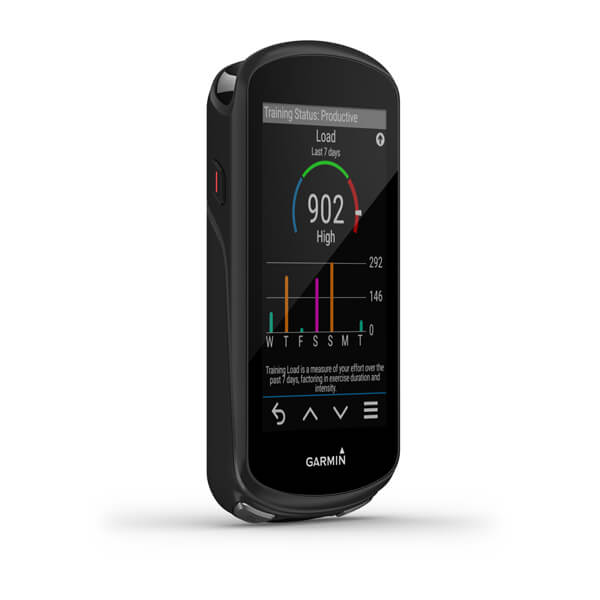
Garmin Edge 1030 Plus
$499
Garmin Edge 1030 Plus is the company’s flagship model with unmatched features and a huge screen.
Pros:
If you want to explore off your planned route, you can pause your ride and get back to it later in the route without it repeatedly asking you to “make a U-turn”.
The unit will provide daily workout suggestions based on your training loads.
Improved sensitivity of the touchscreen is ideal for zooming in and out on the maps. You can even ‘drop a pin’ on the map if you see something interesting and want to get directions.
Cons:
The price tag can be a turn-off for some.
Some users complain that the screen display is too dark and doesn’t react well in different light situations.
Who it’s for:
Garmin Edge 1030 Plus is best for riders who want all the bells and whistles, prefer a touch-screen, and are ready to pay for it.
Wahoo ELEMNT Bolt
$339
Wahoo cycling computers have increased in popularity even among old-time Garmin devotees. Engineered for simplicity, ELEMNT Bolt provides an intuitive ride experience in a sleek, aerodynamic design that cyclists use to make every second count.
Pros:
The small size and weight makes it the “aero” model of Wahoo computers.
It has all the regular training metrics, as well as ANT+, Bluetooth and WiFi.
Offers 16GB of memory and on-device navigation features.
You can easily customize it with the user-friendly ELEMENT app.
Cons:
The 2.2”, 64-color screen may not be large enough for some cyclists to view during a ride.
To create and edit a route, you need to use your phone, and have a signal.
Uses buttons instead of a touchscreen.
Who it’s for:
Wahoo ELEMNT Bolt
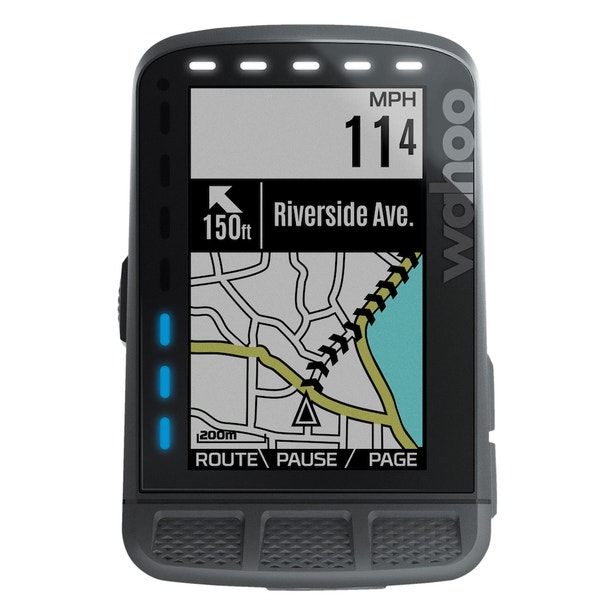
Wahoo ELEMNT Roam
$425
When it comes to navigation capabilities, ELEMNT Roam reigns supreme in the Wahoo family, as it features powerful integrations to enhance your ride.
Pros:
Screen is bigger and has eight-times more colour than in the ELEMNT Bolt.
You can make changes to your route straight from the unit
It will automatically reroute you if you go off the selected course.
Cons:
More expensive, larger, and heavier than ELEMNT Bolt.
Offers buttons instead of touchscreen.
You can’t set up different ride profiles (such as indoor, road or MTB).
Who it’s for:
Wahoo ELEMNT Roam
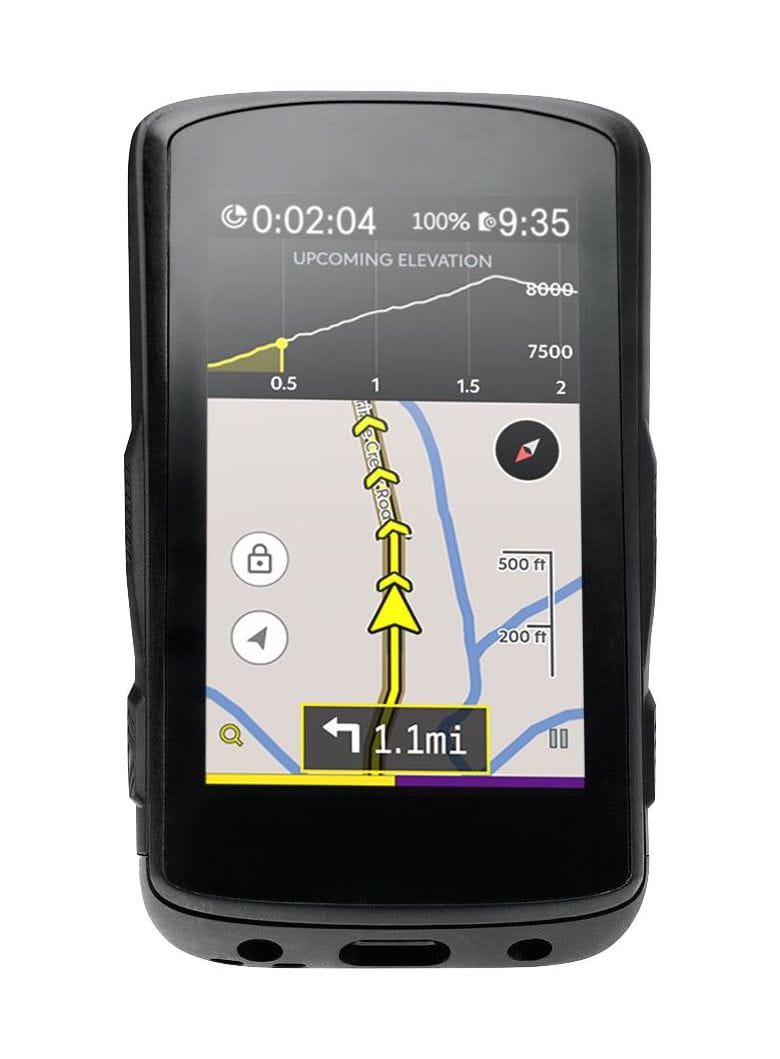
Hammerhead Karoo 2
$399
Hammerhead is a relative newcomer to cycling computers but it’s getting noticed due to its high-resolution display. Bicycling Magazine featured it as “The Best GPS Cycling Computer You’re Not Using”, so let’s explore what makes this cycling computer an up-and-coming player in the cycling technology world.
Pros:
Provides a high-definition scratch-resistant touch screen that is the best in the business, according to the company.
It is not as big as the Garmin Edge1030 but it’s bigger than ELEMNT Roam.
While it uses a touchscreen, it also comes with 4 buttons that gives you more control over the device when it’s raining or you’re navigating over trickier terrain.
Unlike other cycling computers, it has a SIM card slot so you can navigate, receive notifications and upload rides without WiFi. In addition, the USB-C makes charging the unit a snap.
Cons:
Company claims the unit has 12 hours of battery life, but users say it’s much less, which can pose a problem if you regularly do long cycling events.
It doesn’t have as many 3rd party companies writing apps for its platform.
Who it’s for:
Hammerhead Karoo 2
Summary
When it comes to purchasing technology products, individual preferences vary wildly. What someone finds highly intuitive and user-friendly can be overwhelming for someone else. My advice? Decide what features are most important for you and optimize for those features. Whether it’s battery life, screen size, performance trackers, navigation capabilities, or ease of use, all bike computers come with pros and cons, and what works for you really depends on what you want from your system.
Personal note: If you’re not planning on racing or syncing your bike computer to a power meter, getting a smart watch (such as Apple, Suunto, Garmin or Polar) might be a better use of your money. They are multi-functional so you can use them to record running, cycling, swimming or pretty much any activity you can think of.







